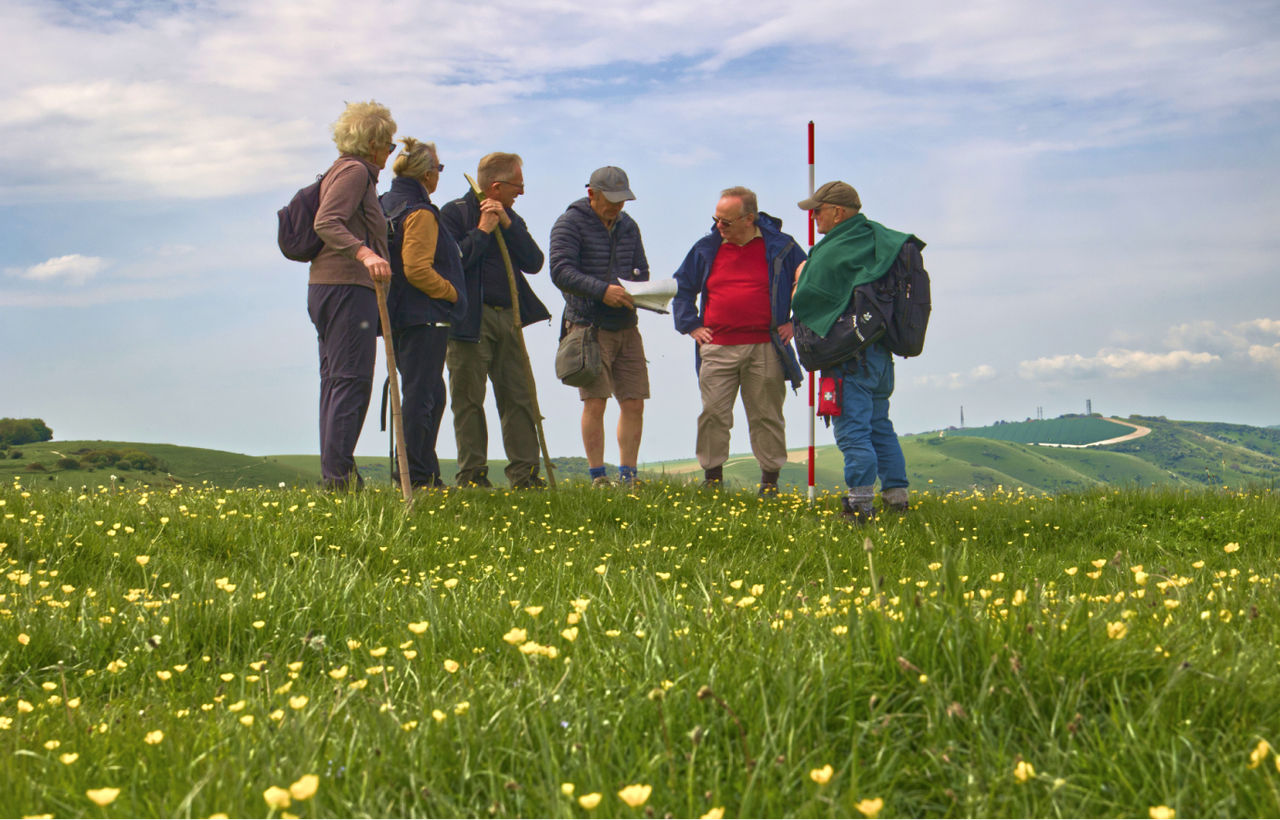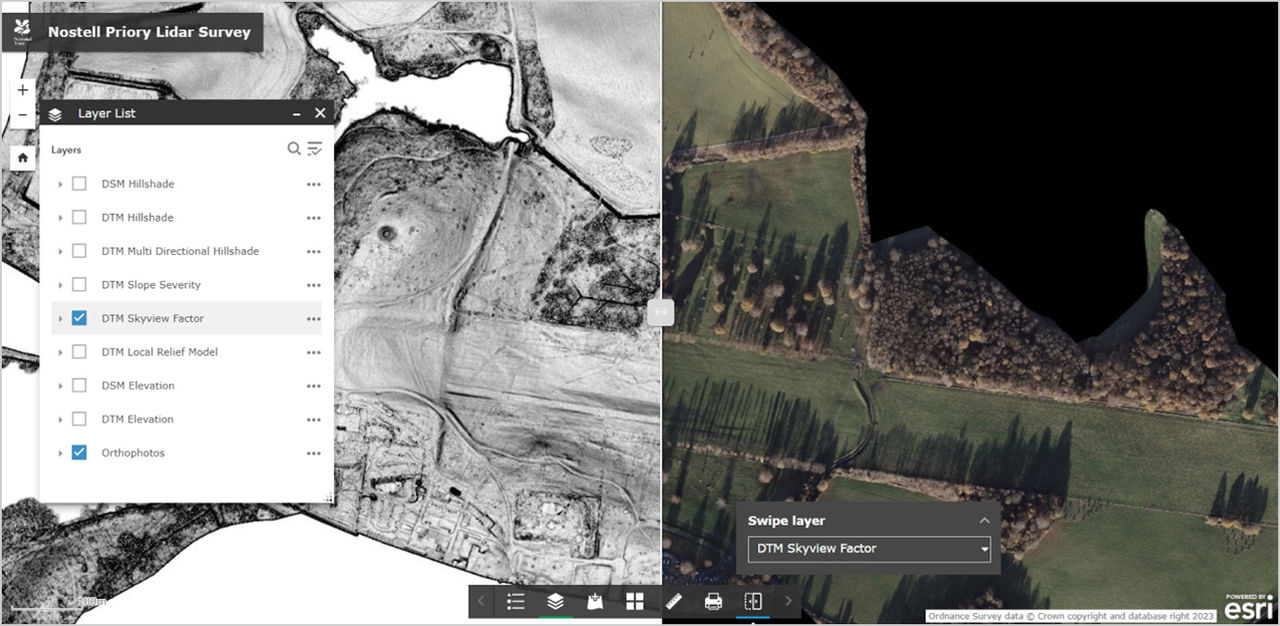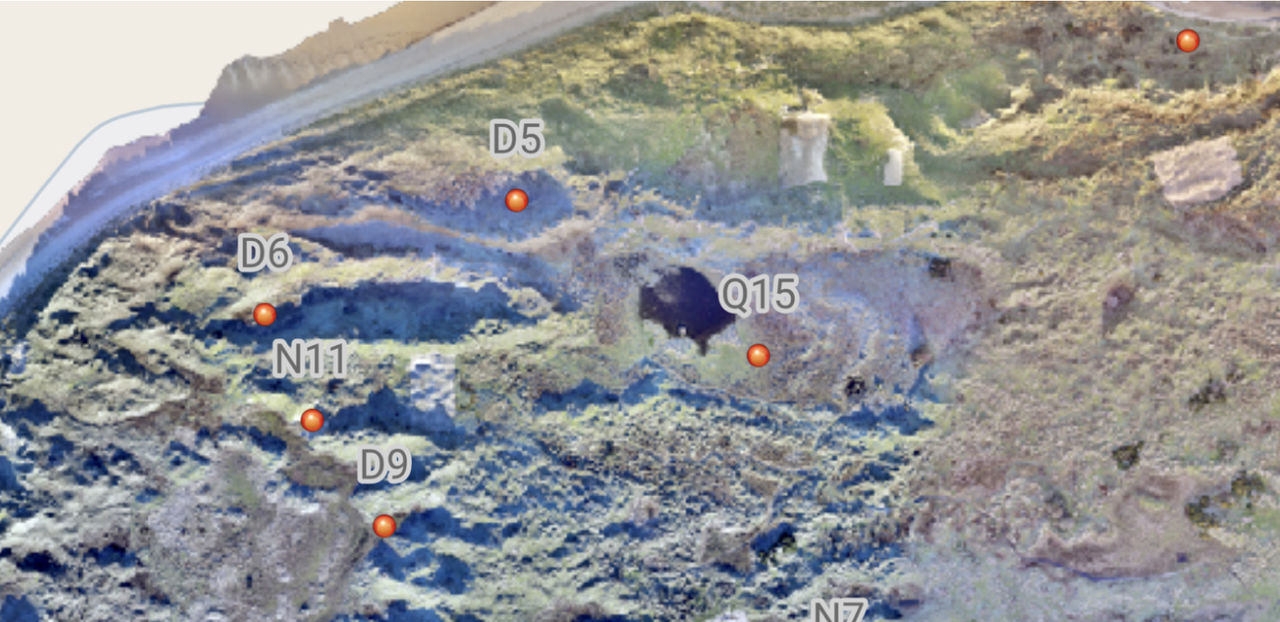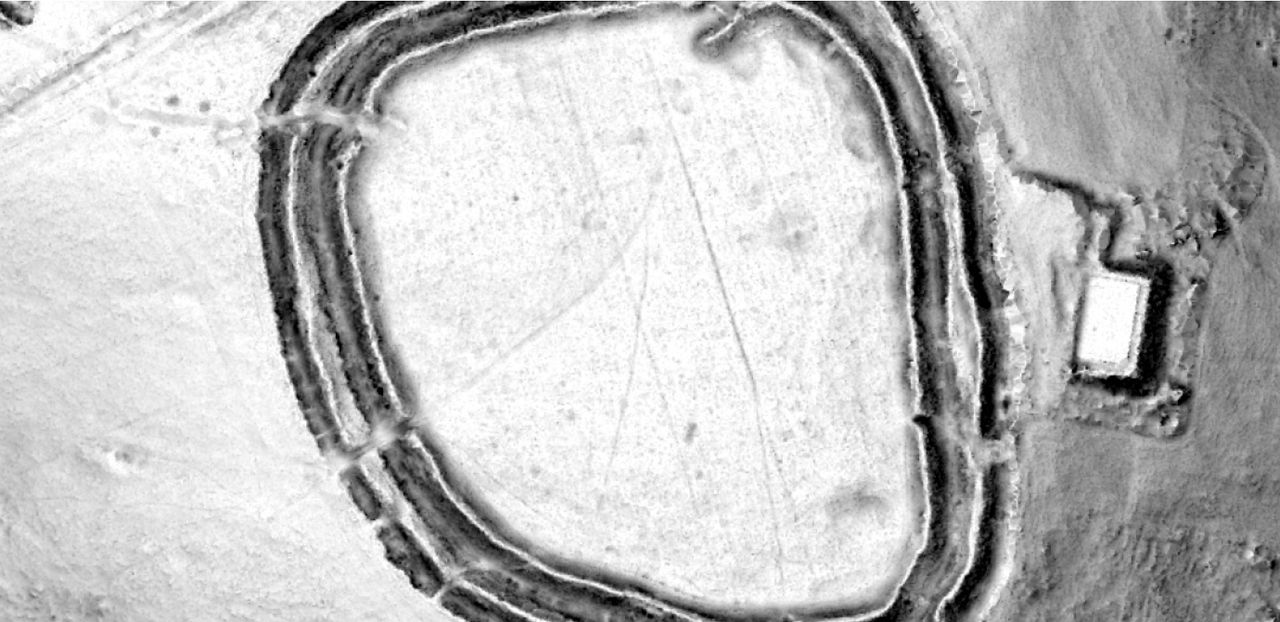
Being able to mobilize our data across our charity is essential if we are to increase accessibility and efficiency. If we can't access the data, we can't make decisions and be an agent for change.
The history of the United Kingdom is enriched by the picturesque island country's many listed buildings and heritage assets, such as monuments, parks, and gardens. These designated structures have been deemed by the government to have architectural and/or historical interest and are considered to be of national importance, helping to protect them for current and future generations. Dedicated organizations like the National Trust aim to protect these assets for the community to enjoy.
Challenge
The National Trust wanted to improve its time-consuming workflow for processing remotely sensed data and streamline imagery sharing.
Solution
ArcGIS Image for ArcGIS Online
Result
Using ArcGIS Image for ArcGIS Online enabled the organization to share imagery data more efficiently and enhanced collaboration.
Founded in 1895, the National Trust is Europe's largest conservation charity dedicated to looking after nature and history for everyone to appreciate. The organization protects and conserves more than 250,000 hectares of land throughout England, Wales, and Northern Ireland, which includes miles of coastline, woodlands, and countryside, as well as hundreds of historic buildings, gardens, and works of art. The National Trust is composed of nearly 12,000 staff members and 46,000 volunteers and is financially supported by the contributions of its 5.7 million members and over 20 million annual visitors.
Archaeologists who work for the National Trust examine a variety of data to assess landscape change over time, as well as the features and objects of the trust's protected land. Imagery is an essential part of this work. Historically, sharing that imagery throughout the organization consisted of distributing a PDF version of it for archaeologists to review and analyze. This approach for processing remotely sensed data and sharing imagery was time-consuming and presented technical challenges for the organization.
The National Trust wanted a new solution that would allow staff to better share imagery throughout the organization, and it turned to ArcGIS Image for ArcGIS Online, a software as a service (SaaS) for hosting, streaming, and sharing imagery. This solution enables internal staff and external partners to easily access imagery and allows users to interact with data and visualize imagery in new ways to gain unique insights.
James Brown, an archaeologist with the National Trust, explains that he and his colleagues need to bring together datasets, paper maps, lidar data, and historic and modern aerial imagery to help map potential archaeology sites. Volunteers and staff then visit these sites for further assessment, and the data collected helps support decision-making.
"Datasets can be very informative for identifying archaeology, but archaeology involves human activity layered over time. It is only with multiple datasets and images that we can attempt to build our understanding of the archaeology," says Brown.
Lidar data also enables archaeologists to remove the vegetation canopy, such as woodland, and see the underlying surface. Keith Challis, the remote sensing coordinator for the National Trust, emphasizes the importance of this data, as it allows archaeologists to view previously unsurveyed areas thoroughly and identify new archeological sites, features, and remains. Lidar data-based digital elevation models (DEMs) can promote efficiency by allowing for the digital review of a site rather than dispatching site inspectors.
 National Trust heritage ranger volunteers surveying Bronze Age burial mounds at Newtimber Hill, West Sussex. Heritage rangers can use web apps to take lidar and other imagery sources into the field to inform their landscape surveys. Using ArcGIS Field Maps, they can digitally document details of the historic landscape while still in the field.
National Trust heritage ranger volunteers surveying Bronze Age burial mounds at Newtimber Hill, West Sussex. Heritage rangers can use web apps to take lidar and other imagery sources into the field to inform their landscape surveys. Using ArcGIS Field Maps, they can digitally document details of the historic landscape while still in the field.
The previous process in place for processing remotely sensed data was very time-consuming, Challis says, because he was the person largely responsible for responding to individual requests. Each request required Challis to manually generate a document based on the imagery that he had acquired or create a new map and send it to the requester. Then, if the requester wanted to see a different area or zoom in on a specific region, another map had to be created.
The sharing of data also created challenges for the National Trust team. Previously, according to Challis, the only way to access data in the geographic information system (GIS) was if staff had a physical copy on their hard drive, a portable hard disk to share, or server access, which limited their ability to get a near real-time view of a site. The team started sharing imagery as GeoPDFs, or georeferenced PDF files, but this process was later blocked by changes in organizational software policy.
"So what that meant was finding . . . inefficient solutions to get that imagery to people," says Challis. "There were all sorts of organizational issues, time issues, and efficiency issues."
The National Trust wanted a new solution that would allow them to quickly mobilize all of their imagery data, whether lidar, aerial photography, or drone imagery, providing more efficient access to it across the organization.
As a longtime Esri technology user, Challis stays up-to-date on the latest Esri developments, and once he became aware of ArcGIS Image for ArcGIS Online, he knew it would help streamline sharing and usability of the imagery. ArcGIS Image for ArcGIS Online provides imagery hosting, streaming, and advanced analysis capabilities in the cloud. A few members of the National Trust team met with Hattie Gwilt, a nonprofit sector lead for Esri UK, and other technical experts for a product demonstration. That meeting led to the decision of the National Trust to use the product.
"The group walked us through the capabilities of ArcGIS Image Online and answered a few questions," says Challis.
Feedback from the National Trust was that the ability to mobilize imagery across the organization with ArcGIS Image Online was a significant benefit, as was the flexibility of streaming data into various applications and devices.
Challis began the process of sharing imagery in ArcGIS Image Online by using a web app builder to create a uniform front-end experience, largely to help non-GIS users in the organization access data. He created a standard web app template with a web map that contained data from ArcGIS Image Online and offered some basic tools and views. Challis says this allowed these users to look at imagery in a familiar environment and enabled all users to access the maps themselves.
"It gives an array of functionality—everything's in the web app, and all they've got to do is look," says Challis.
A typical workflow for Challis starts with a request from a colleague, like an archaeologist or ranger who needs information about a specific area, and together they determine the type of imagery needed. An external provider then flies over the area and collects the data. Then, a large package of data is electronically sent to Challis and the GIS team for them to download, process, and share the imagery layers using ArcGIS Image Online. Once the layers are shared, they can then be used to build web maps for the user.
The team uses group settings in ArcGIS Online to create groups, and once the groups are created, Challis easily shares data using a URL. "They can see the data in their web browser. Or if they're an ArcGIS Pro user, once they know [the data is] there, they can search for it in Portal and bring it into their desktop," he explains.
 Lidar and aerial photographic survey can be combined and presented to the organization’s non-GIS specialist users using a simple standardized user interface. The swipe tool, shown here, is useful for comparing information on two imagery sources.
Lidar and aerial photographic survey can be combined and presented to the organization’s non-GIS specialist users using a simple standardized user interface. The swipe tool, shown here, is useful for comparing information on two imagery sources.
The National Trust has been using ArcGIS Image Online since 2022, enabling the organization to share imagery data more intelligently and efficiently. The solution has also allowed them to replicate processes consistently when assessing different properties.
One reason the product works for the National Trust, a charity with thousands of staff and volunteers that have different skill sets, is that it works for everyone. It caters to individuals who are not familiar with GIS and just want to view a map, as well as those experienced in working with data who seek a tool for more significant work with those data.
The web apps give users the ability to interact with data more easily and are an ideal way for nontechnical users to interact with imagery and data. Jeff Swain, an Esri product engineer, says ArcGIS Image Online supports the transfer of knowledge in an easy, effective way, and the web apps provide more control over what a user sees.
"In effect, it's like putting a simple frame around your data, which gives a limited set of tools and ways of looking at the data and makes it easy for people to interact with the data," says Challis.
 Image data from a detailed drone survey of vegetation at Sandscale Haws on the Cumbrian coast is combined with field observations of vegetation species and characteristics using bespoke apps developed using ArcGIS QuickCapture.
Image data from a detailed drone survey of vegetation at Sandscale Haws on the Cumbrian coast is combined with field observations of vegetation species and characteristics using bespoke apps developed using ArcGIS QuickCapture.
The use of ArcGIS Image Online has also enhanced collaboration, enabling staff in the office or field to view and interact with the same data during meetings. It has also helped create more effective partnerships with universities, commercial organizations, and other external partners who also use Esri software. This means the trust can simply set up a project in ArcGIS Online for them to view.
Efficiency has increased with ArcGIS Image Online, empowering staff to do many tasks themselves. As the person responsible for new requests, Challis's engagement with a project was often ongoing. Now, it only takes a few days to process survey data and upload it to ArcGIS Online, and users can view and analyze the data as needed. The solution has improved turnaround times and the ability to respond to a range of requests with confidence.
"There's a little bit of personal security there. I'm not irrelevant, but I'm not as in demand as I was. [The imagery layers] are doing what they're meant to do," says Challis. "[It is] now free to be used within our charity to make decisions and to create change."
The capability of accessing real-time data is an additional benefit that has allowed the National Trust team to explore new ways of using imagery. Challis can create a mobile application in ArcGIS Field Maps or ArcGIS QuickCapture, enabling staff or volunteers to view imagery data in the field in real time.
 ArcGIS Image Online allows National Trust to mobilize their data through ArcGIS Online for their general users and via the portal within ArcGIS Pro for GIS specialists. Here, multiple visualizations of lidar survey of the Irone Age hillfort at South Cadbury in Somerset are used to discern details of the hillfort and its interior.
ArcGIS Image Online allows National Trust to mobilize their data through ArcGIS Online for their general users and via the portal within ArcGIS Pro for GIS specialists. Here, multiple visualizations of lidar survey of the Irone Age hillfort at South Cadbury in Somerset are used to discern details of the hillfort and its interior.
The feedback from the National Trust has been very positive across the board, with easy access to imagery being one aspect that the team has praised. The National Trust has already been using ArcGIS Image Online in other work, including the restoration of moorland peat bogs and the counting of seal pups in coastal colonies. Being able to bring lidar, aerial photography, and satellite Earth observation together in ArcGIS Image Online means that staff get immediate context and insight.
"[The data we collect] only exists to inform decision-making, which is about positive change," says Challis. Making the data widely available across the organization, to help people with their decisions so that they can make those positive changes for the landscape and the environment—that's what it's about for us."

Being able to mobilize our data across our charity is essential if we are to increase accessibility and efficiency. If we can't access the data, we can't make decisions and be an agent for change.